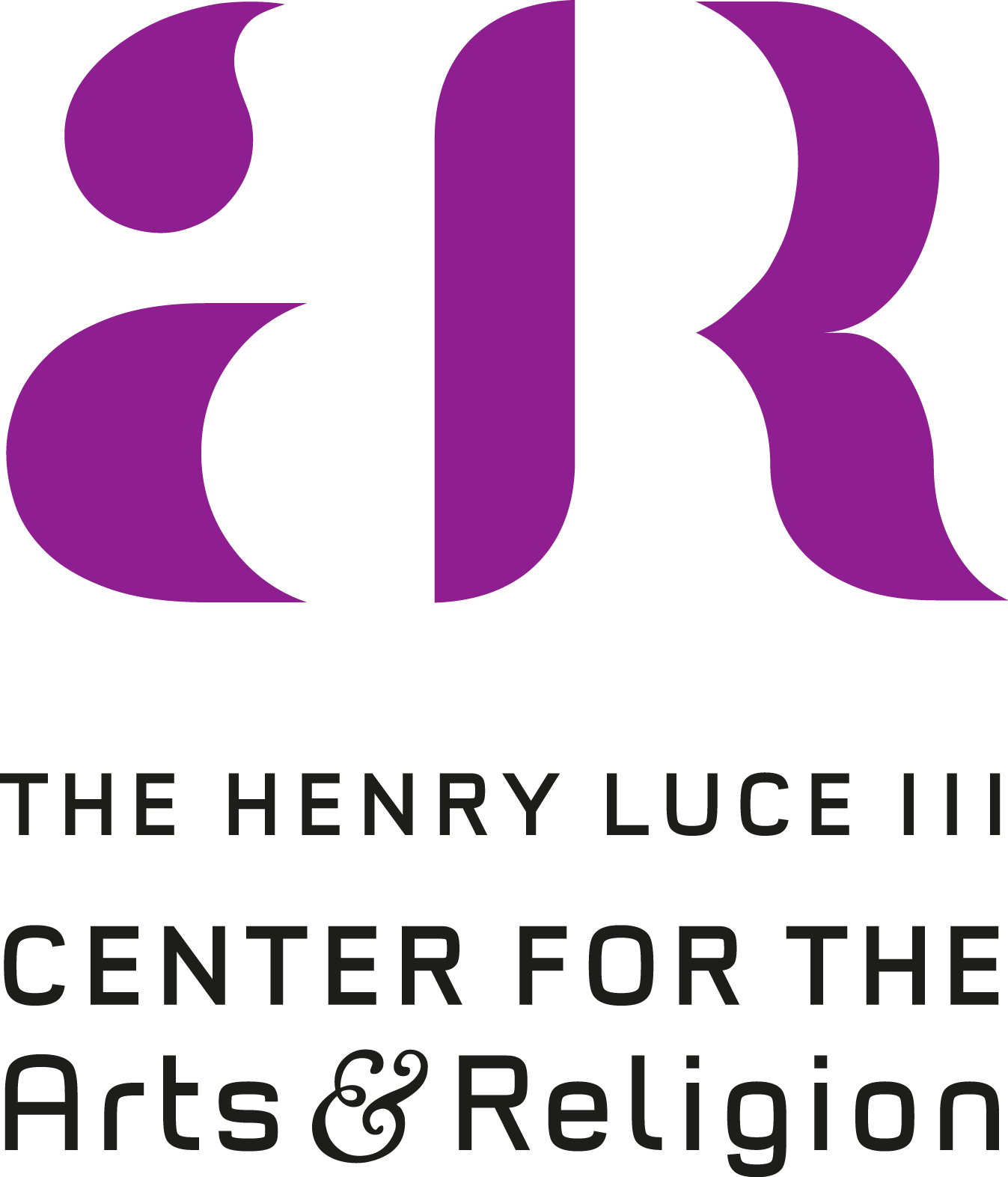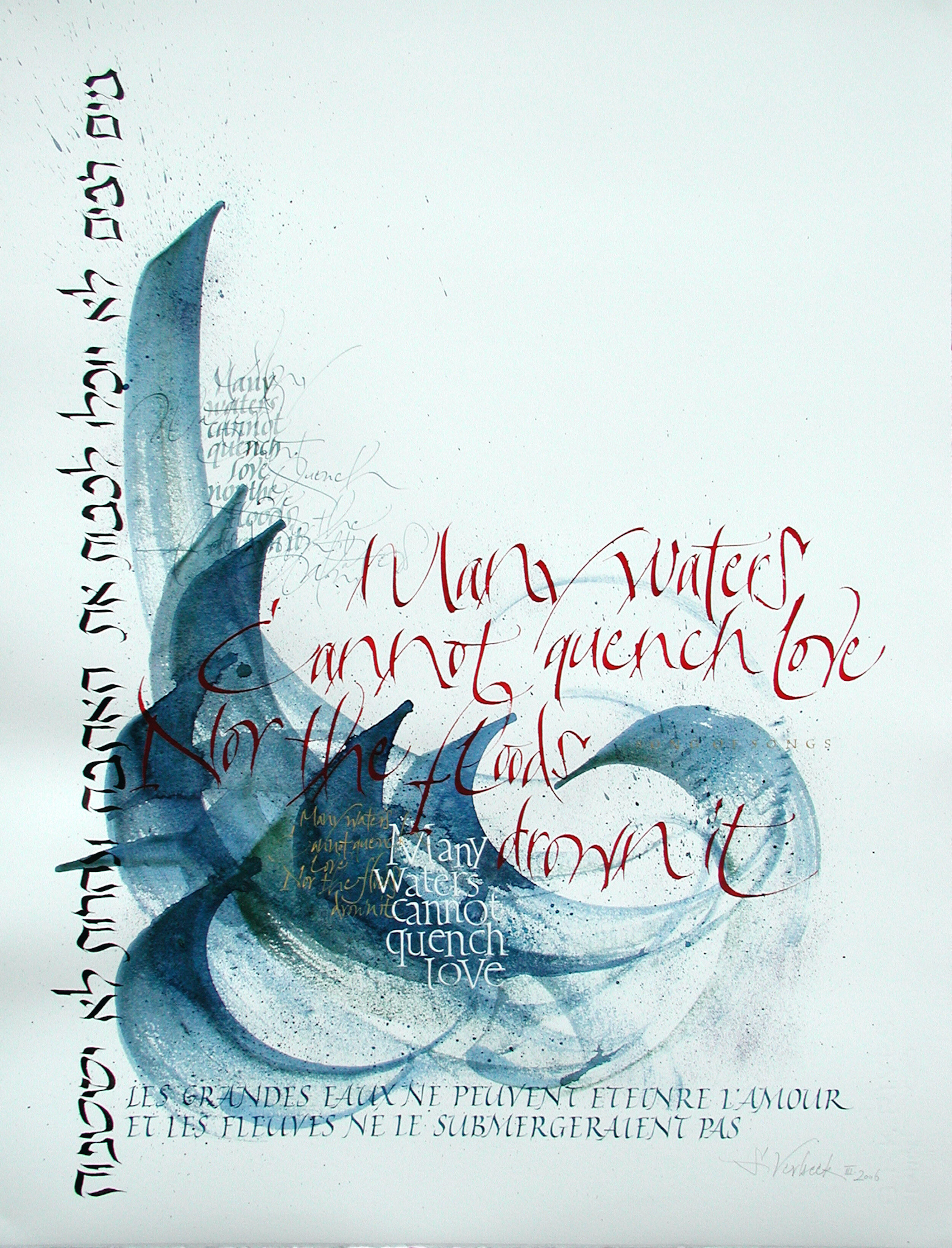Sophie Verbeek
Many Waters Cannot Quench Love, 2006
26 x 20”
Watercolor, gouache
As a commissioned gift for a rabbi, French calligraphic artist Sophie Verbeek repeats a key line from Song of Songs, the Hebrew Bible’s love poetry which Jews and Christians traditionally read as speaking of God’s love for humanity. The phrase which Verbeek repeats (bolded below) comes at the poem’s emotional climax, in which a woman beseeches her beloved:
Set me as a seal upon your heart,
as a seal upon your arm;
for love is strong as death,
passion fierce as the grave.
Its flashes are flashes of fire,
a raging flame.
Many waters cannot quench love,
neither can floods drown it.
If one offered for love
all the wealth of one’s house,
it would be utterly scorned. (8:6-7)
Verbeek describes her style as “musical calligraphy,” focusing on gesture, the freedom of line, and the exploration of visual rhythm. She repeats the phrase seven times to explore each of these dimensions—much like a theme-and-variations musical composition like Elgar’s Enigma Variations.
My eye goes first to the Hebrew variation running vertically down the left side of the page, dripping like the verse’s “many waters.” Verbeek explains that she had to teach herself Hebrew script for this piece, and the fluid, dancing script she employs here seems inspired by Hebrew calligrapher Gina Jonas’s gestural Hebrew scripts. The flowing waters continue to the right of the Hebrew line, in dynamic blue waves created with a dry brush technique—the wave begins wet and fades to dry as the brush runs out of pigment, suggesting that the Song’s flame of love overpowers the brush’s waters.
Atop and within the waves, Verbeek repeats the verse five times. The most prominent, at center, is written with in a bold red—the flames of love. She writes the line polyrthymically; if the space between the vertical lines of the letters is a musical beat, here the space varies. The wide “M” of “Many” contrasts with the more compressed ‘notes’ of “waters.” Much like the varying rhythms of jazz, this creates a kind of dynamism and movement, surprise rather than predictability. Verbeek echoes this polyrhythmic line both above (in black) and below (in gold). These repetitions, with a narrower point, carry the freedom and informality of ordinary handwriting.
Yet not all is uniformly free and gestural. Verbeek creates contrast with other repetitions using formal, upright letterforms: an Italic at top left, serifed white letters in the waves, and capitals in French at bottom. These repetitions of the poetic verse suggest the uprightness, the firm resolve of love. The most staid repetition, the white letters within the waves, only dance in relation to one another, via the varied vertical placement of each letter in the line.
This piece is a seascape of rhythm, of letters dancing with one another around the page, and with each variation of the verse expressing a new element of its sound and meaning. If many waters cannot quench love’s flame, many letters may feed it.
—Homrighausen
Further Reading:
Verbeek, Sophie. Musical Calligraphy / Calligraphie musicale. Livres Blurb France, 2019.
Gina Jonas, Hebrew Calligraphy Styles, 2nd ed. Self-pub., 2006.
On “polyrhythmic” calligrapghy, see Denis Brown, Brown Calligraphy: Denis Brown Discusses His Art (Dublin: Quill Skill Publishing, 2017), 112–32.
Read more:
Biblical Poetry and the Art of Repetition
Jonathan Homrighausen





